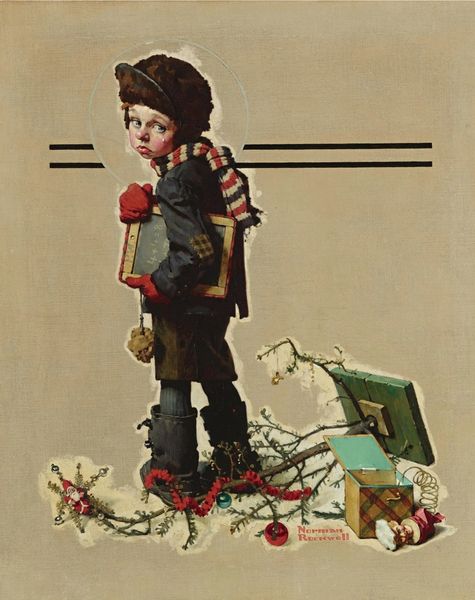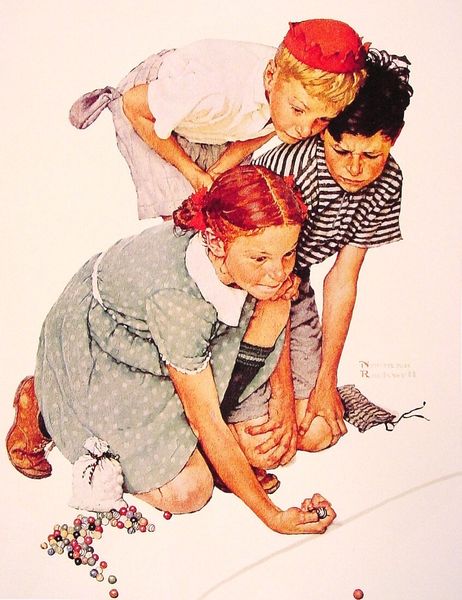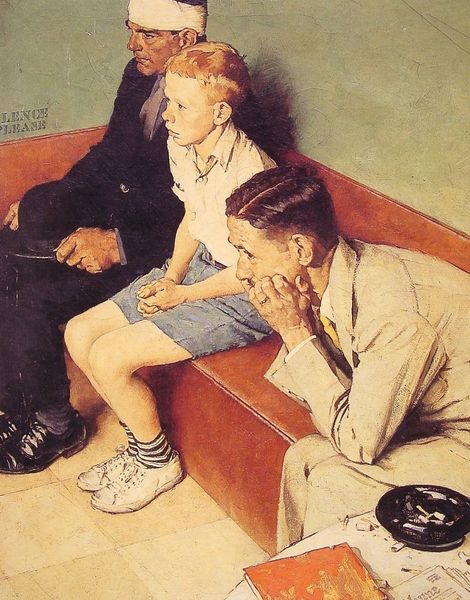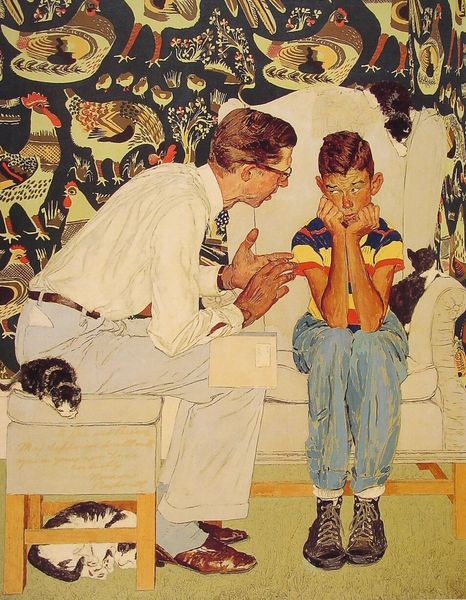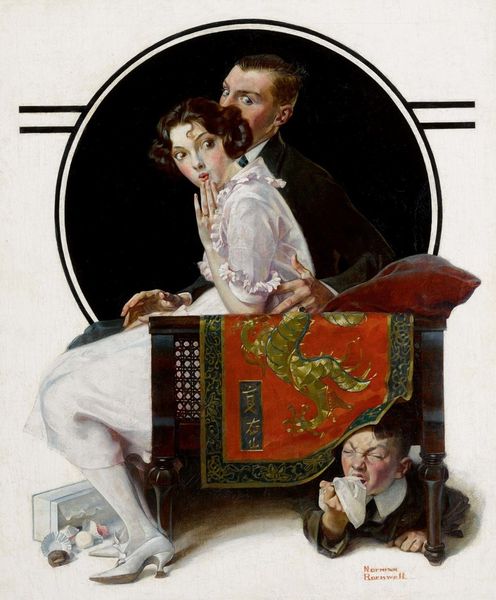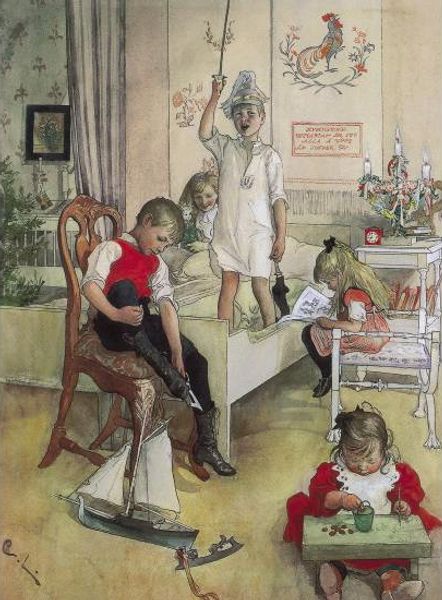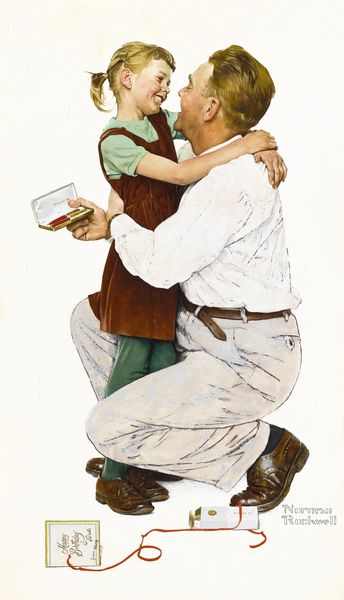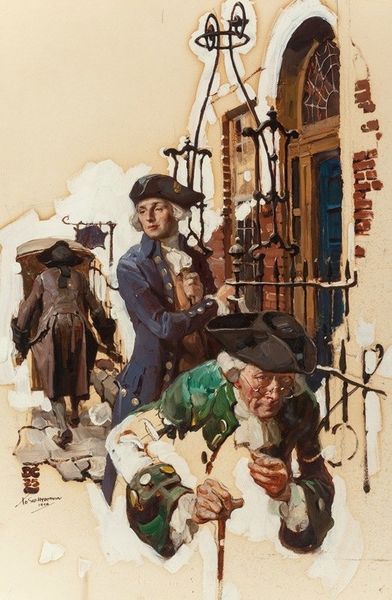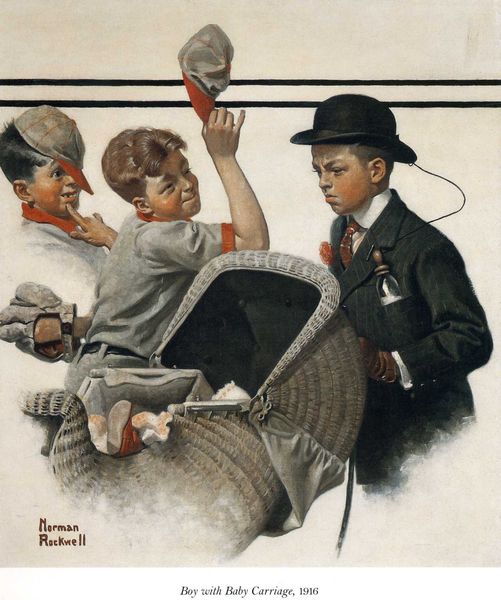
painting, impasto
#
portrait
#
narrative-art
#
painting
#
impasto
#
genre-painting
#
sitting
#
portrait art
#
modernism
#
fine art portrait
#
realism
Copyright: Norman Rockwell,Fair Use
Curator: Norman Rockwell’s “Family Home from Vacation,” created in 1930, captures a poignant moment of post-vacation exhaustion. What strikes you most about the composition? Editor: Immediately, the overwhelming feeling is one of weariness. The muted palette of blues, grays, and browns, combined with the slumped postures of the figures, speaks volumes about the family’s state of fatigue. It's further reinforced through the asymmetrical distribution of forms creating visual weight. Curator: Precisely. Consider the broader context: painted during the Great Depression, this artwork speaks to the economic anxieties of the era. Vacation, once a symbol of leisure, now feels like a distant memory. This reality seems heightened given that Rockwell completed this piece for magazine publication during that time, reaching potentially anxious and vulnerable middle class American audiences. The posters behind the family also give way to an interesting juxtaposition. Editor: Interesting point about the societal context. Technically, the linear arrangement, with each family member occupying distinct yet connected spaces on the bench, contributes to a cohesive visual narrative that speaks to interdepence. I find myself contemplating how much each member leans onto the other for strength. Curator: Indeed. This idea connects directly with the narrative, speaking to how family units rely on each other. The child's furrowed brow could signal how their individual needs get subsumed by familial demands. Notice the mother figure, her head drooping, suggests the weight of maintaining the household's emotional well being. This imagery evokes how families in crisis lean on the labor, often unacknowledged, of women. Editor: From a purely aesthetic perspective, there’s something quietly compelling about the interplay of textures—the rough weave of the father’s hat contrasting with the smoothness of the mother's dress, for example. Even that tiny flower resting over the luggage tells its own, delicate story, using a simple shift of value. Curator: I see this use of texture functioning metaphorically, mirroring the complex and often discordant emotions within families navigating difficult socio-economic conditions. That small detail may function more broadly as a subtle reminder of joy or beauty during bleak circumstances. Editor: I admit that shifting your perspective brings out something more poignant, a reminder to appreciate small moments of beauty during less-than-ideal realities. The meticulous detail almost creates its own emotional language within this domestic sphere. Curator: Yes, considering the social context provides even deeper insights into Rockwell’s technical brilliance. Editor: Ultimately, both perspectives add a new depth of engagement. Thanks for broadening my take!
Comments
No comments
Be the first to comment and join the conversation on the ultimate creative platform.
